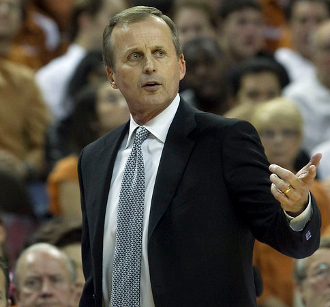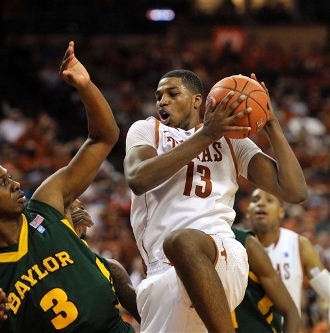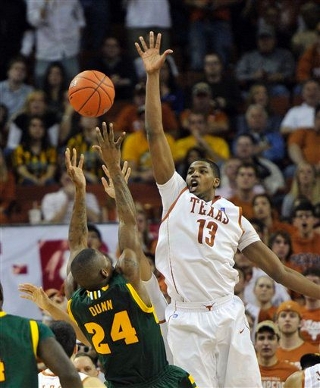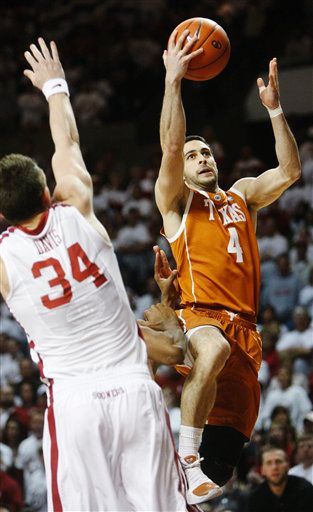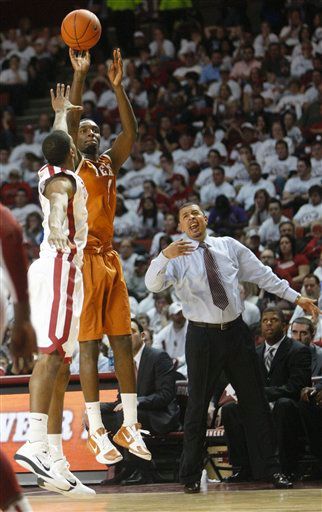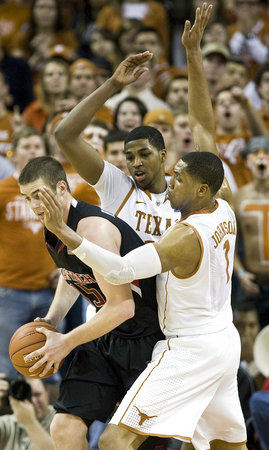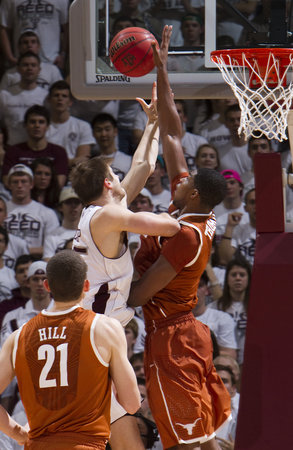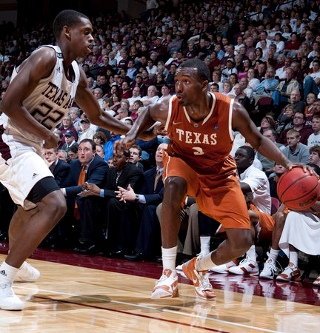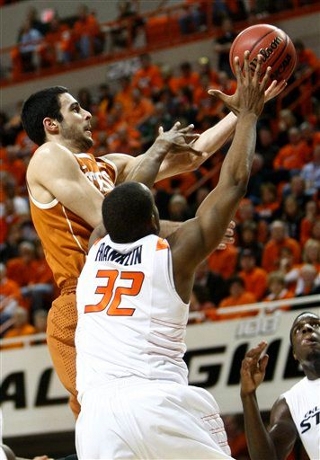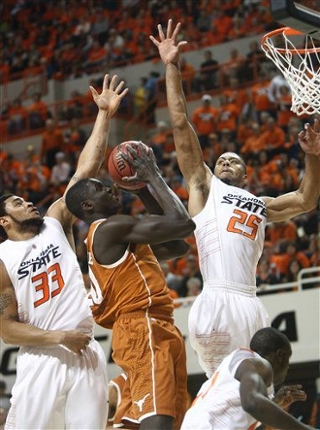After the first twenty minutes of Saturday’s game, it looked like the Longhorns were well on their way to another double-digit rout of a conference opponent. Texas held Baylor to just 0.64 points per possession in the first half, well off their season mark of 1.095, while the Longhorns knocked down more than 53% of their shots. Texas built a lead as large as 19 points and headed to the locker room up by 16. Things changed rather quickly. LaceDarius Dunn scored 22 points in the second half, while Texas endured a painful stretch of 6:18 without a field goal. The Longhorns also left points on the line, making just six of 11 free throw attempts during the field-goal drought, allowing Baylor to hang around until the final minutes. The Bears were able to trim the lead down to just three points with 2:06 to play, but Texas ultimately iced the game with six free throws down the stretch.
Rick Barnes has guided Texas to a 10-0 conference start The victory moves the Longhorns to a perfect 10-0 in Big 12 play, still just one game ahead of a Jayhawk team that waxed Iowa State in Lawrence on Saturday. With only six games left to play, even the slightest slip-up by Texas will practically guarantee Kansas a share of the conference championship. There are few games left on the Jayhawks’ schedule that look like possible losses, so it is becoming increasingly likely that the Horns must run the table to secure an outright Big 12 title. Even though this victory ended Texas’ nine-game run of double-digit conference wins, at this point all that matters are the Ws. What looked good A big part of Texas’ stifling first-half defense was a dominant effort on the glass. The Longhorns allowed Baylor to reclaim just 22.2% of their misses in the first half, limiting them to only a handful of second-chance opportunities. That strong effort continued in the second half, as the Bears finished with a 23.8% mark on the offensive glass. If not for Dunn’s impressive second half, the Baylor offense still would have been on lockdown. The overall defensive effort was incredibly impressive for the Longhorns, especially considering how outsized they were in the post. Even with Dunn going off in the second half, the Bears managed just 0.843 points per possession on the afternoon. The Bears had only been held below 0.900 PPP one other time all season, in a neutral-site loss to Gonzaga back in December. On offense, Texas did a great job of attacking the Baylor zone in the first half. The team knocked down their open jumpers and made quick passes for easy looks inside. Texas’ zone offense was so good, the Bears actually switched to their hardly-used man-to-man defense in the second half and settled for a hack attack inside defensively. Texas’ execution against the zone was a welcome sight after a few seasons in which the team has struggled mightily against even average zone defenses. Rather than settle for outside looks as they would have in past years, Texas put on a clinic on how to attack the zone, and it worked to the tune of 38 first-half points.
Tristan Thompson led the Horns to victory on Saturday For the Longhorns, the MVP was freshman Tristan Thompson, who was a beast inside. He blocked three shots, scored 17 points, and grabbed 13 rebounds, eight of which came on the offensive end. Unfortunately, he had his typical 50% performance at the line, knocking down just 7-of-14 on the afternoon. Thompson’s impact was biggest in the final minutes of the game, as the Longhorns struggled to hold off Baylor. He knocked down a pair free throws to put Texas up five with 94 seconds left, then batted a Baylor lob pass out of bounds on the following possession, preventing an easy layup for the Bears. What needed work Part of what caused the Texas drought in the second half was poor shooting just feet from the rim. Time and again, layups and short jumpers rimmed out, allowing Baylor to slowly chip away at the Texas lead. It is easy to chalk these kinds of misses up to bad luck, but luck or not, the Longhorns simply have to convert when they are that close to the basket. For the Horns, the 0.969 points they scored per possession was their lowest offensive output since the Michigan State game. While that’s not a terrible number, the strong first half for Texas buoyed that average, masking just how abysmal the second half was. During the final twenty minutes, the Longhorns managed just 0.795 points each time down the floor. A big part of that offensive ineptitude was terrible free throw shooting. While that’s nothing new for this Texas team, their inability to hit the easy ones when they counted the most nearly allowed Baylor to come back for an improbable win. As previously mentioned, Thompson was the biggest offender with his 50% effort at the line, but the problem was team-wide. J’Covan Brown, normally one of the team’s steadiest free-throw shooters, hit just 4-of-7, including 2-of-4 after Baylor had been tagged with an intentional foul and technical foul.
LaceDarius Dunn scored 26 against a tough Texas D If the Longhorns are truly the national title contender that many pundits think they are, we must bring up the cautionary tale of the 2008 Memphis Tigers. That team was just 61.4% from the line on the season, and their poor shooting down the stretch in the national championship game allowed Kansas to force overtime and ultimately win the title. One can’t help but think a similar fate is in store for Texas at some point in March if they cannot improve their 64.7% mark at the line. On defense, the backcourt assignments were interesting. Shutdown artist Dogus Balbay was primarily assigned to A.J. Walton, while freshman Cory Joseph had the tough task of stopping Dunn. Despite the 26-point outburst by Baylor’s superstar, you can’t really knock Joseph for how he defended him. LaceDarius drilled multiple threes with Joseph just inches away from him, and he managed to sink quite a few layups and runners after making acrobatic finishes among the Texas bigs. The defense on Dunn certainly isn’t something that “needed work.” After all, he scored just four points in the first half before his superhuman effort in the second stanza. But, unfortunately the dichotomy of our post-games doesn’t really allow for a better place for this note. You simply have to applaud Joseph for his effort and tip your hat to Dunn on an impressive performance. Up next: vs. Oklahoma State (16-8 overall, 4-6 Big 12) |








